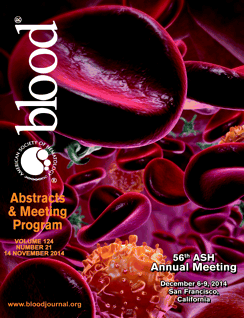Abstract
Hydroxyurea (HU) is the only FDA approved anti-switching agent for the management of sickle cell disease (SCD). The non-response rate to HU (inadequate increase in fetal hemoglobin (HbF)) has been reported to be as high as 30%. However, the role of patient non-compliance as a cause of sub-optimal response to HU has not been studied. Establishing the rate of non-response to HU despite adequate dose and compliance would help in ascertaining patients who might benefit from alternate treatment strategies in SCD. The primary objective of this study was to differentiate between non-compliance and lack of response in patients using laboratory parameters other than HbF. We conducted a retrospective review of 137 adult SCD patients from GRU's Sickle Cell Center that were reportedly taking HU for ≥ 6 months. Data included weight, dose, HbF, Hb, RBC, RDW, retic, MCV, MCH, WBC, ANC, platelets, bilirubin, prior to initiation of HU therapy and at the time of maximal HbF response. Dose of HU/Kg required to achieve that response and time to response was calculated. We defined response as an absolute HbF value of ≥20% or a ≥5% increase in HbF from baseline. The anticipated direction of change in laboratory parameters indicative of compliance was an increase in MCV, MCH, Hb, PCV, and a decrease in RDW, retic count, WBC, neutrophils, platelets, and bilirubin. Patients without a change in HbF but with response from the additional parameters were classified as inadequate-responders. Patients without response in HbF as well as additional parameters were classified as non-compliant. We performed a regression analysis to study the effect of dose and patient age on the response (change in HbF). To model dosage, a new variable called HU exposure was calculated as the product of dose (mg/kg/day) and treatment time (days). The HU exposure and age was used as the predictors for change in HBF. Our results showed that of the 137 patients, 82(59.9%) were responders to HU (mean dose of 18.8mg/kg) with an expected increase in HbF and 36(26.3%) were non-compliant (mean dose of 18.48mg/kg) based on the fact that the aforementioned laboratory values did not change significantly. Only 19(13.9%) were non-responders (mean dose of 16.84 mg/kg) based on a lack of HbF response despite other laboratory parameters being indicative of compliance with HU. Out of the 19 patients who were non-responders only 2 patients were on HU doses more than 20mg/kg. In the overall sample, we found that both age and HU exposure were positively associated with HbF change, which was highly statistically significant (p=2.55E-08 and 7.03E-10, respectively). When we performed regression analysis in the responders, non-responders and non-compliant groups separately we found that in the responder group both age and HU exposure were positively associated with HbF change, with high statistical significance. In the non-responder group however, age and HU exposure were not statistically significant. Patients with SCD on HU who fail to show an adequate increase in HbF are more likely to be non-compliant with medication than actually being truly resistant to it. We have shown that laboratory measurements beside HbF help make the distinction between true HU non-responders and non-compliant patients. We believe a non-response rate of 13.9% may still be too high based on the fact that the average dose of HU was 16.97mg/kg, barely over the recommended starting dose of 15 mg/kg/day. These data suggest that among adult patients on HU, the rates of the non-responders are very low when given adequate doses of HU for sufficient periods of time.
No relevant conflicts of interest to declare.
Author notes
Asterisk with author names denotes non-ASH members.

